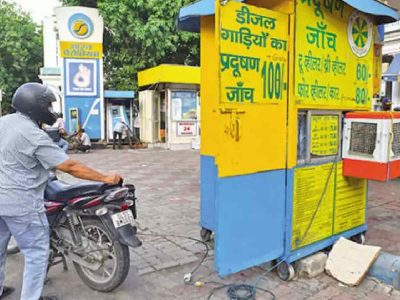“Holi” immediately brings to mind a beautiful mess of colours and conjures a sense of organised chaos as fistfuls of colours are flung onto people’s skin. Almost a cinematic experience!
But, in India, come Eid, Holi or Diwali — when festivals arrive, can sweets be far behind?
The spring festival of Holi is welcomed by shades of colourful powder arranged in a stainless steel tray, and in the middle of the tray, you will find me – your flaky and crunchy Gujiya. Today, I come in many flavours and sizes, but I maintain one shape, which resembles a conch and looks exactly like empanada.
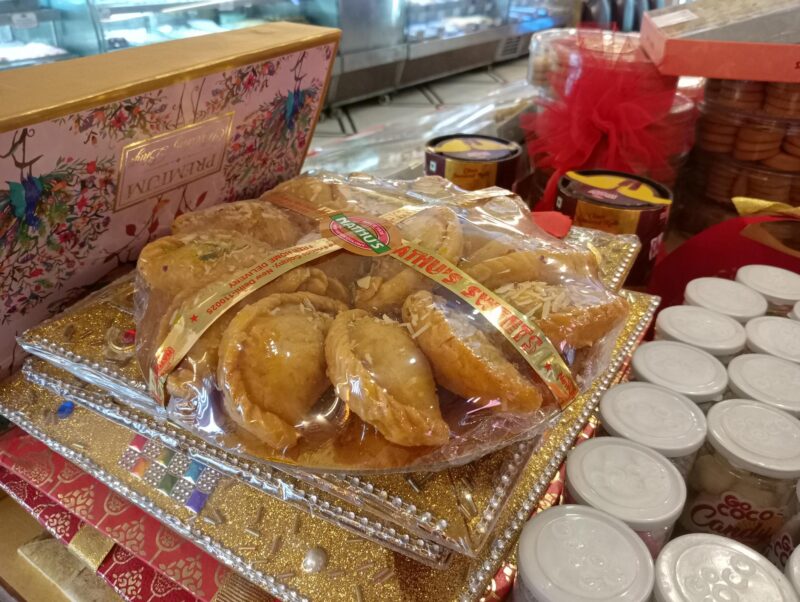
At the peak of celebrations when the effect of Thandaai has set in and revellers are all smeared in colours, almost unrecognisable, I am the most sought-after. With every malt-like bite, I bring heaven to the mouth. On Holi, Thandaai is my inseparable twin and we complement each other.
While I originated in the homes of Rajasthan, I travelled to become Delhi’s favourite festive sweet. Especially in Holi, I am the champ. But I do come along with the gulab jamun, barfi, kaju katli, halwa, ghewar, ras malai, pista samosa and more!
As March sweeps in, I float around homes and sweet shops and then reappear magically in Diwali. You can call me, as old Delhi’s legendary confectioners Chaina Ram described, ‘a labour of love’.
As delicious as I am to bite into and savour, I am, however, not so difficult to be made at home.
“Gujiya is a labour of love. They are easy to make, but take time and patience. But once you make them, you won’t regret the time spent, as they are amazing,” says Shridhar, one of the many staff members at the sweet shop.
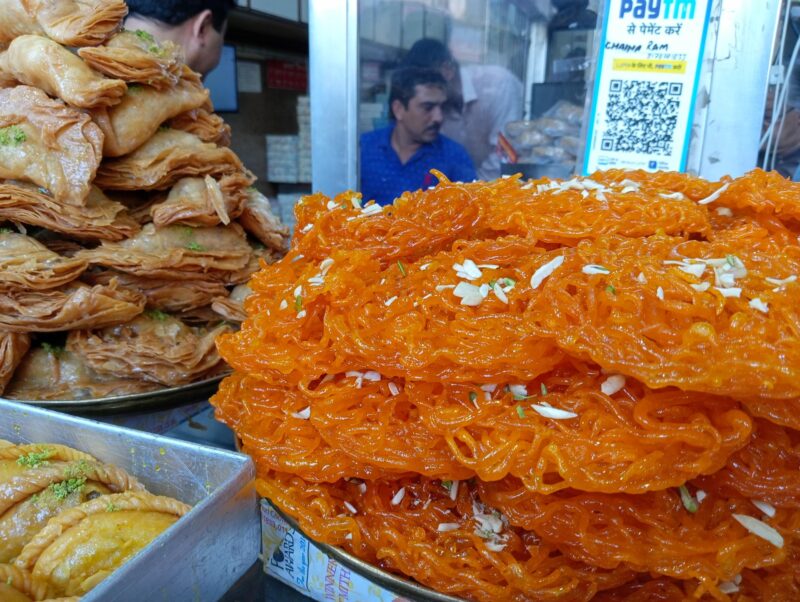
There is a bee-line outside Chaina Ram’s, which is in the Fatehpuri Masjid complex in Chandni Chowk, as customers ordering kilograms of pista samosa, sindhi ghewar and gujiyas.
“We start selling gujiyas from Basant Panchami and sell them only during this time of the year. Each of our gujiya weighs around 70 gm. While pista samosas are there almost all year, ghewars are also seasonal. Soon, they will disappear from the racks. Sindhi ghewar is made like jalebis. Unlike the other white ghewar, we don’t use mawa (concentrated whole milk) in the Sindhi one,” he adds.
In the competition of sweets, I am undefeated.
“Gujiyas are most in demand. Holi in Delhi is almost synonymous with gujiyas. Its crispy, flaky crust, with the sweet filling of mawa, nuts and coconut, is what rules hearts, I guess. Besides, its gooey texture is hard not to yearn for,” Shridhar says as he hands out three kilograms of gujiyas to a customer.

Chaina Ram is catering to the sweet tooth of Delhiites since 1901.
“There are two types of gujiyas. One is chaashni wali gujiya (soaked in sugar syrup) and the other is the dried and baked one. We don’t make the latter here,” he says.
The dough is made with all-purpose flour, desi ghee, water and a pinch of salt. The filling is mainly mawa (khoya), dry fruits, coconut and granulated sugar.
Around 300 meters away from Chaina Ram, sweet lovers are waiting in a queue outside Vishal Mawa Bhandar to get their hands on Kesar-badam dudh (another Holi special) and different kinds of gujiya.
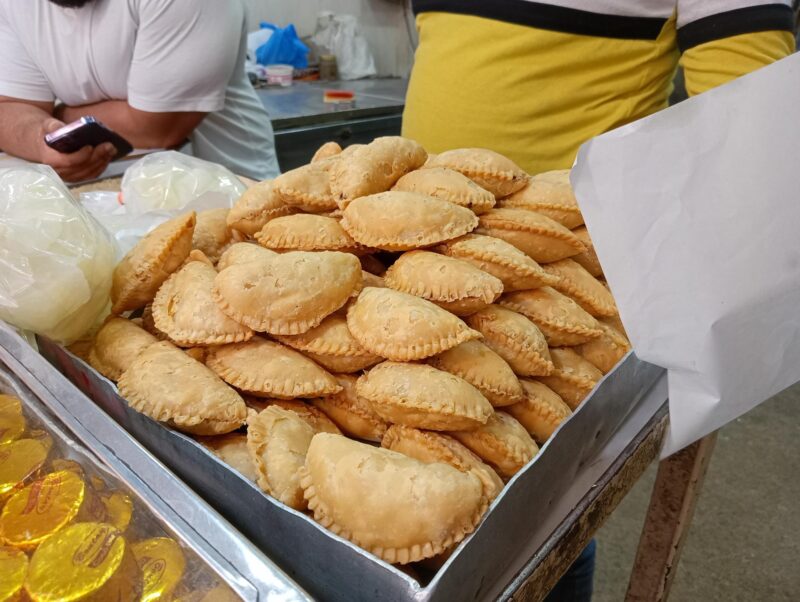
“In Delhi, you have festival-specific sweets. Like on Diwali, people run after kaju katli and soan papdi, Holi means gujiya and cold milk-based beverages. Here, we don’t tamper with the flavours of gujiya and try to keep it traditional. But we keep both the juicy and dry ones,” says Sameer, sitting at the counter of the shop.
“Thandaai has not arrived yet because they are not yet in demand. People start buying thandaai a day or two before Holi. So, you won’t find them in sweet shops before Holi. You need a lot of ingredients to make good thandaai. It is quite a refreshing drink and is loaded with some rich ingredients like dried nuts & fruits, seeds, fragrant spices and saffron,” he says.
Talking about the ingredients, he says, “Thandaai is traditionally made with a dose of bhaang (cannabis). But the ones you get in sweet shops don’t contain bhaang. We use milk, sugar, almonds, raisins, cashew, poppy seeds, saffron, rose water, fennel seeds, melon seeds and green cardamom. On the evening before Holi, it is sold in bulk because people drink it on the day of Holi before, during and after the celebrations.”
While thandaai and I (gujiya) are the ultimate winners during Holi, there is more to sweets like Sohan Halwa, Moti Choor ke Laddoo, Malpua and the usual mithai that Delhi is known to savour.
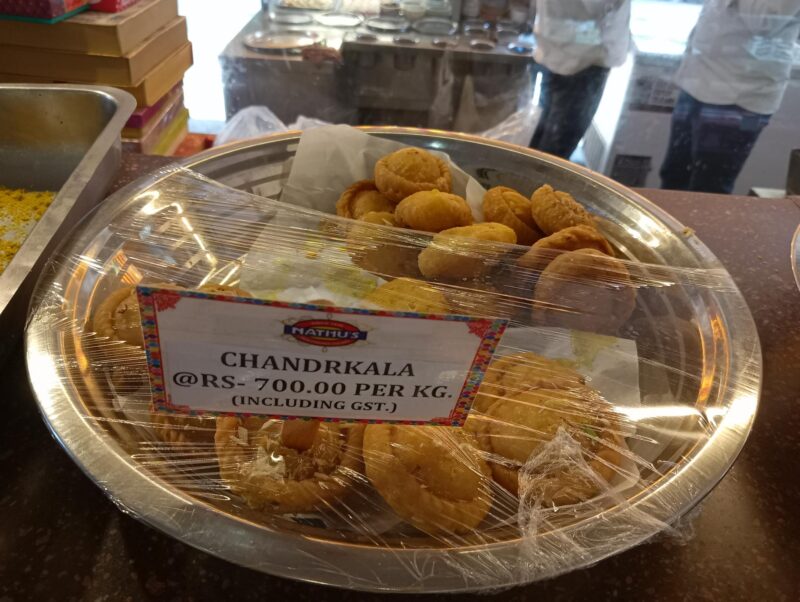
At Bengali Market, Nathu’s Sweets is popular for its choicest desserts that span from regular laddoos to gujiyas. During Holi, their sohan halwa is people’s favourite. A traditional Mughlai dessert, Sohan Halwa leaves customers mesmerised by the richness of ghee and dry fruits.
“Its main ingredients are sugar, ghee, milk, water, cornflour, saffron, green cardamom and dry fruits. Pretty much like any other mughlai sweet. But the process differs. Unlike other sweets, it is hard,” says Madan, a worker at the shop.
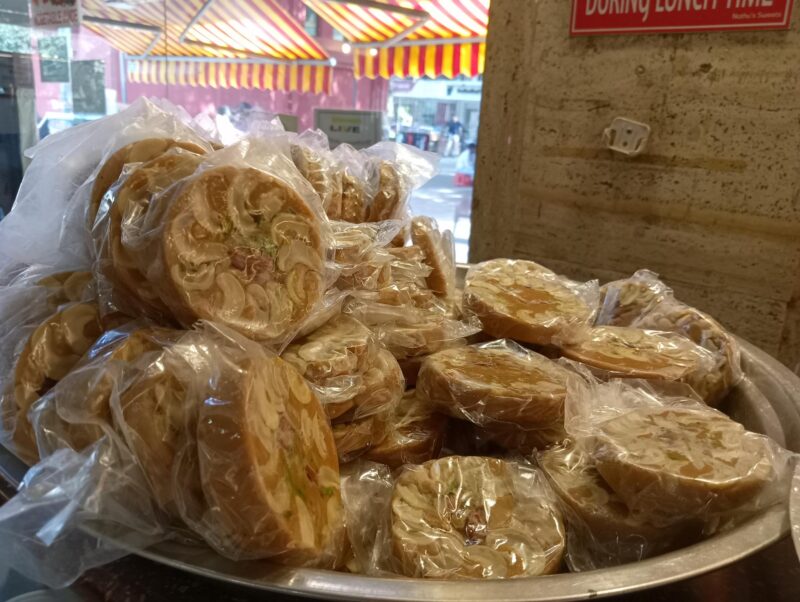
“People also buy a lot of malpua during Holi, like any other festival. But, at least, in our shop gujiyas and sohan halwa sell the most during this time,” he says.
There are big baskets and packages of sohan halwa, along with gujiyas, ready for customers to take away for distributing among friends and family on Holi.
Similar decorated boxes of sweets have arrived at popular franchise outlets such as Bikanerwala and Haldiram’s where they have also announced exciting offers on Holi desserts.




